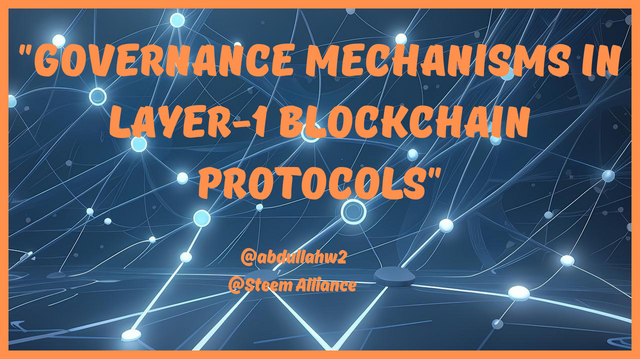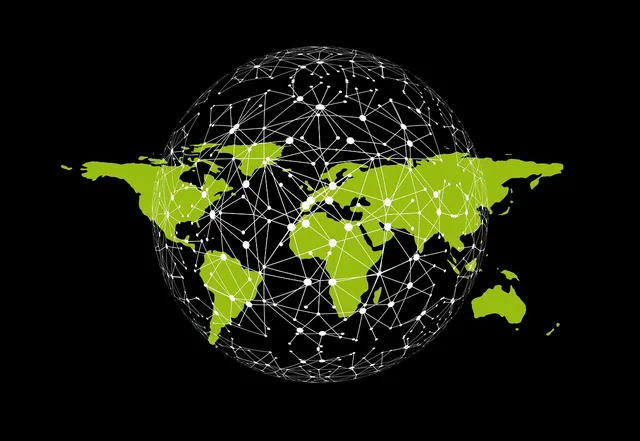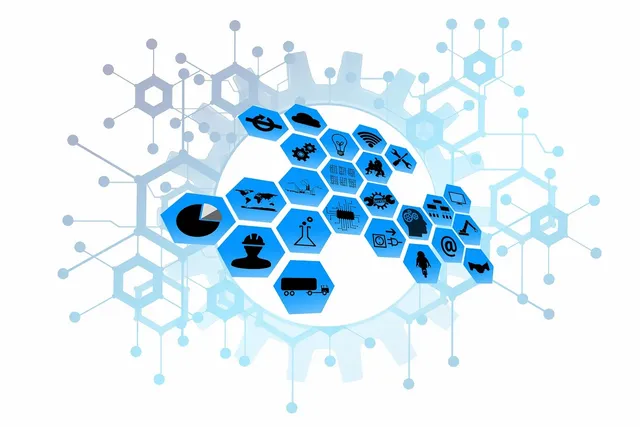"Governance Mechanisms in Layer-1 Blockchain Protocols"
Assalam O Alaikum |
|---|
Hello, dear friends! Well, come to my post. How are you all? I hope you will be doing well, by the grace of Almighty Allah. I'm also fine and enjoying my day. Today I'm here to share my knowledge about the topic "Governance Mechanisms in Layer-1 Blockchain Protocols" in this Steem Alliance community. So let's start without any further delay.

Friends, as we can all know, in the architecture of a blockchain network, the basic layer is called layer 1, which holds the basic information and mechanisms of that network. It also holds the primary functions of that network and provides an infrastructure for decentralized applications and smart contracts. Also, it takes an active part in validating the transactions and storing useful information.
So now we can say that layer 1 of a blockchain network works as a primary and autonomous chian, which confirms and validates the transactions quickly. Layer 1 stores the history and data of transactions and then operates as a distributed ledger because, after the first layer, the remaining layers, such as layers 2, 3, and 4, are constructed over it. It utilizes consensus mechanisms for validating transactions.

Many of the protocols, such as Ethereum, Bitcoin, Solana, etc., set the fundamental principles, rules, and functionalities of a blockchain network. But sometimes it becomes very crucial to maintain the integrity, security, and efficiency of a network while ensuring the governance of all these protocols. This is because the network keeps updating over shorter intervals of time, which creates difficulties in maintaining the integrity of the network.
So the governance Mechanisms are designed to play a very important role in solving all these problems. Within a blockchain network. Besides them, some other issues may be created, such as the upgrade of protocols, security vulnerabilities, and other challenges associated with them. All these things are done on the principles of decentralization and consensus mechanisms.
That thing creates a great difference between decentralized and centralized governance because things are controlled by a single authority, and all the decisions are made by it. But on the other hand, in decentralized governance, things are controlled by different entities, such as miners, developers, and participants as well.
Type of Governance |
|---|
So now if we talk about the types of governance, it has types such as on-chain governance and off-chain governance. They are both quite different from each other. So now let's have a look at the main differences between off-chain and on-chain governance to make things clearer.

- 1. On-Chain Governance;
Governance relies solely on smart contracts and decentralized mechanisms because decisions are made on the basis of smart contracts and decentralized mechanisms. So through these mechanisms, things are in the hands of users because they can make decisions according to their own perspectives, through which they can share their will in changing network parameters and upgrading protocols through their votes.
All these things collectively play a vital role in ensuring the integrity, security, and transparency of a network because all the actions are recorded online on the decentralized system. For example, the Ethereum network utilizes on-chain governance, through which token holders can actively take part in the activities of the network, such as staking and the approval of specific updates.
- 2. Off-Chain Governance:
The other type of governance is off-chain governance, which is quite different from on-chain governance. In this type of governance, the decisions are made outside the blockchain network with the help of a centralized system. In this way, decisions are made and controlled by a single authority, which may negatively affect the transparency and security of a network, which may create a lot of challenges for users and for developers too.
In this type of governance, the decision-making processes are done online through video calling and emailing as well, because we can't participate in them directly due to the presence of centralized technology. So due to all these things, people prefer to have on-chain governance in blockchain networks so they can keep an eye on everything within the network.
Conclusion |
|---|
So friends in conclusion the governance has a great role in maintaining the layer 1 and the overall whole Blockchain network. This is because through it the transactions can be validate easily which means that it solve the scalability issues of a Blockchain network. Also it can play an integral role in shaping the future of a Blockchain network and also the future of decentralized applications. In this article we have briefly discussed about the governance of layer 1 Blockchain and it's types. I hope it will be helpful for you.

x Share
your understanding of the importance of governance in blockchain networks. Thank you for reading!
Thanks a lot dear friend for a lovely comment and your appreciation 🤗
Note:- ✅
Regards,
@theentertainer
Thanks bro for your kind evaluation ☺️